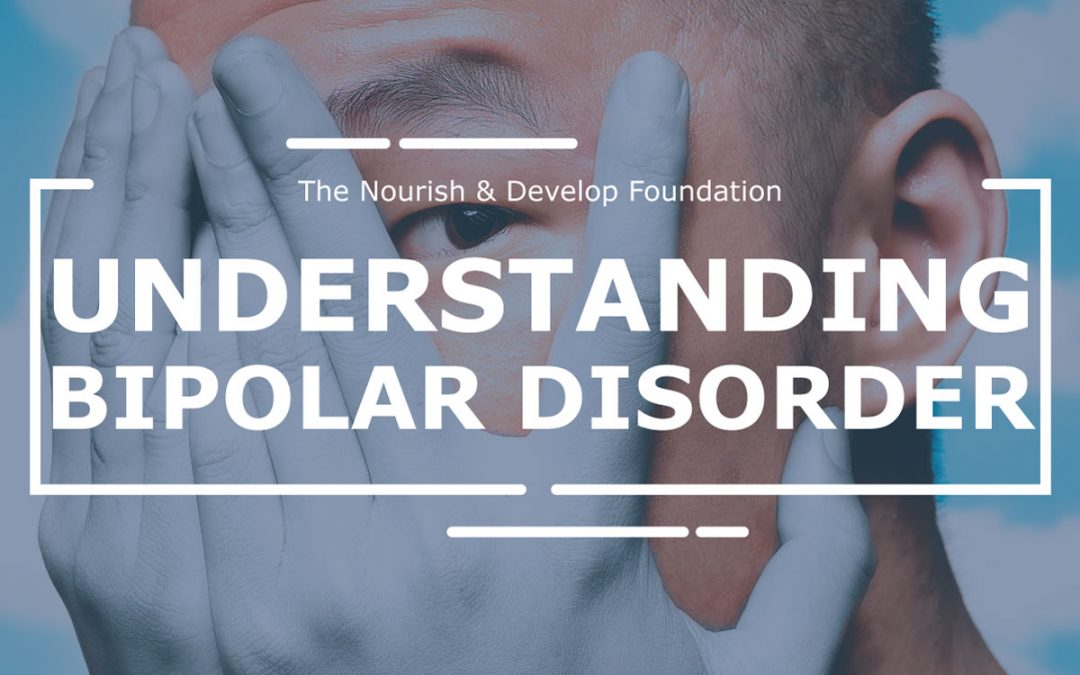As classified by the American Psychiatric Association’s Diagnostic and Statistical Manual of Mental Disorders (DSM-5),
bipolar disorders are a group of brain disorders which cause extreme fluctuation in a person’s mood, energy levels, and ability to function.
It is a medical condition that directly affects approximately 1% of the Canadian population. Bipolar disorders can be especially stigmatized due to unfair stereotypes portrayed in the media (television shows, movies, books, etc.) associating the mental illness with chaos and having people in the character’s life respond with ignorance to their behaviours and diagnosis. Even if people with bipolar disorders do relate to some of these facets, the problem lies in having their overall character being defined by their illness. Today, we would like to bring awareness to bipolar disorders and to clear up any misconceptions about what it means to have them.
Alternative names include:
- Manic depression
- Manic-depressive disorder
- Manic-depressive illness
- Manic-depressive psychosis
- Bipolar mood disorder
- Bipolar affective disorder
- Bipolar illness
- Bipolar disease
Episodes
The experience of bipolar disorders is unique to everyone, but to receive a diagnosis there does have to be a presence of particular symptoms which are related to 1 of 3 distinct mood episodes. The different episodes are often referred to as ‘highs and lows’ or ‘ups and downs.’ These are not the typical mood swings you would have because of hormonal changes or as an emotional response to a happy/stressful event or situation. Instead, they usually last for days rather than hours and can be extreme in their range, causing significant disruptions to daily life. It is important to mention that people who have bipolar disorders generally have periods of neutral mood as well.
Lasts for at least 1 week where energy is increased, and one feels extremely high-spirited or irritable for nearly every day of the 1-week period for most of those days. 3 or more of the following symptoms must be present and be a change from baseline behaviour:
- Inflated self-esteem or grandiosity
- Decreased need for sleep
- Increased talkativeness
- Racing thoughts
- Distracted easily
- Increase in goal-oriented activity or psychomotor agitation
- Engaging in reckless activities that hold the potential for consequences (excessive spending)
HYPOMANIC EPISODE
Lasts for 4 consecutive days. Symptoms are the same as those of a manic episode, but less severe and do not lead to major problems in daily functioning.
Lasts for at least 2 weeks where mood is depressed, and one feels a loss of interest or pleasure in life. 5 or more of the following symptoms must be present, including at least 1 of the first 2 symptoms listed:
- Depressed mood most of the day, nearly every day
- Loss of interest or pleasure in all, or almost all, activities
- Significant weight loss or decrease/increase in appetite
- Engaging in purposeless movements, such as pacing the room
- Fatigue or loss of energy
- Feelings of worthlessness or guilt
- Diminished ability to think or concentrate, or indecisiveness
- Recurrent thoughts of death, recurrent suicidal ideation without a specific plan, or a suicide attempt
types of bipolar disorder
A person must have experienced a manic episode or when manic symptoms are so severe that hospital care is required. Usually, separate major depressive episodes occur as well, but having a mix of major depressive episodes with manic symptoms or a mix of manic episodes with depressive symptoms is also possible (mixed features).
A person must have persistent major depressive and hypomanic symptoms that are not as intense or long enough to qualify as major depressive or hypomanic episodes. These symptoms usually occur for at least 1 year in children/teenagers and for at least 2 years in adults. During this 2-year period, the mood swings must have lasted for at least half the time and never stopped for more than 2 months.
A person must have experienced at least 1 episode of hypomania and 1 major depressive episode in their lifetime, but never a manic episode. There is a recurring pattern of hypomanic and major depressive episodes, though most people experience major depressive episodes more often.
Some bipolar disorders do not have a specific pattern or fall into the criteria of the above 3 disorders yet can still have periods of clinically significant mood changes. This type is taken just as seriously as any other form of mood disorder. An example of unspecified bipolar disorder is only experiencing hypomanic episodes.
myths about bipolar disorder
FALSE: With proper treatment, management, and social support, more than 75% of people with this illness continue to work and live fulfilling lives.
FALSE: Though positive feelings can be associated with mania; it can be a very dangerous state to be in. Mania can trigger delusions, impulsive behaviours, and an increased risk of suicide.
FALSE: While alcohol and drug use is not recommended for people who have bipolar disorder as it can exacerbate symptoms and interfere with treatment, substance use does not cause bipolar disorder independently, if at all. Genetics and brain structure seem to play a part in the development of bipolar disorder, as people with certain genes have a more increased risk, but lots of genes are involved, there is not just one. People with a family history of bipolar disorder are more likely to exhibit symptoms but most don’t.
FALSE: To reach a diagnosis, doctors may do a full physical exam, order medical testing to rule out other illnesses causing symptoms, and refer someone to a mental health professional to conduct a psychiatric evaluation.
FALSE: Typically, bipolar disorder is diagnosed during the teenage years and early 20s. It is occasionally diagnosed in children as young as age 6.
treatment options
Episodes found in bipolar disorders are often brought on by stress, so ‘talk therapy’ can apply scientific techniques to help the individual learn coping tools for stress management and regulating mood and strategies for repairing relationships and identifying triggers, among others. Some popular therapies for bipolar disorder include Cognitive Behavioural Therapy (changing negative thinking patterns), Interpersonal Therapy (focusing on relationships), and Social Rhythm Therapy (working to stabilize biological rhythms). Therapists might also suggest keeping record of a ‘mood chart’ to track fluctuation in moods, to gain insight in patterns, and to relate them back to environmental factors.
Bipolar disorders are primarily treated with medications. Mood stabilizers (like lithium) & atypical antipsychotics (like olanzapine) are most commonly prescribed for managing symptoms. Sometimes there is a process of trial and error involved to find the right medication or combination of medications for the individual. It is important to discuss all benefits and side effects with a doctor and to consult them prior to stopping medication.
A combination of psychotherapy and medication have the best effects on keeping bipolar disorder under control, but by adopting a healthy lifestyle that can put your body and mind in a good place to be receptive to treatment. People who have bipolar disorder often have a higher risk for physical conditions like type 2 diabetes, stroke, and heart disease. Research shows that practicing good sleep hygiene, eating a balanced diet (+ avoiding alcohol and drug use), keeping physically active, and having a structured routine can make a positive difference. Read about how someone noticed improvement by changing their diet here.
supporting your loved ones
- Do your research so you better understand what your loved one is going through and to not take their symptoms personally
- Set an example! Use person-first language when speaking about mental illness (‘she has a mental illness’ rather than ‘she is mentally insane!’ or ‘they have bipolar disorder’ rather than ‘they are bipolar!’)
- Offer help. While it is important to let them know you are there for them, it is helpful to be specific in what you can offer
- Make a crisis plan: Have a list of emergency contacts so you can act quickly and effectively if a crisis situation occurs.
- Engage in self-care! Establish boundaries for what you will and will not subject yourself to protect yourself and your relationship
“It’s something that I have, it’s not who I am.”
Resources:
https://www.helpguide.org/articles/bipolar-disorder/helping-someone-with-bipolar-disorder.htm
https://dmhs.ca/wp-content/uploads/2014/05/Pathway-Publisher-third-updated.pdf
Sources:
https://www.nimh.nih.gov/health/publications/bipolar-disorder/index.shtml
https://www.psychiatry.org/patients-families/bipolar-disorders/what-are-bipolar-disorders
https://www.bannerhealth.com/healthcareblog/better-me/myths-about-bipolar-disorder



